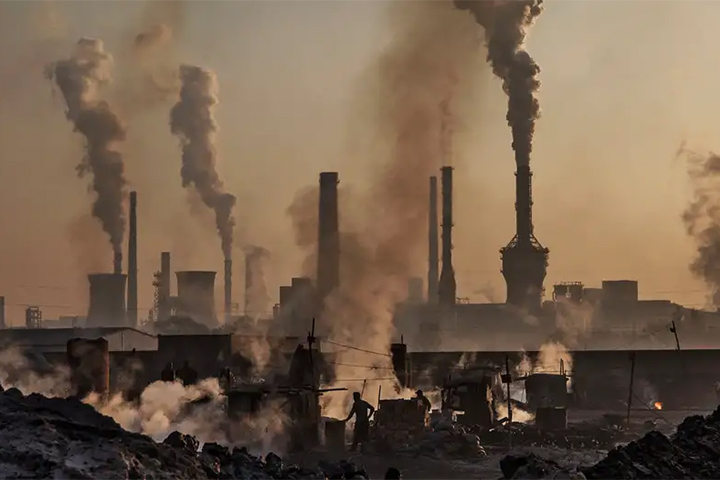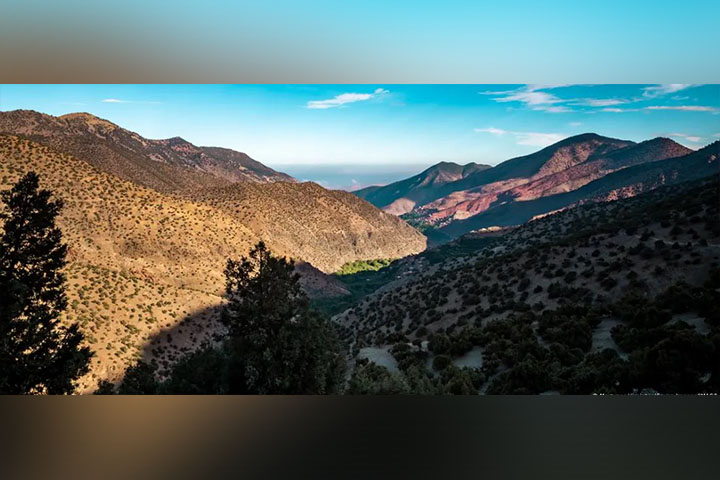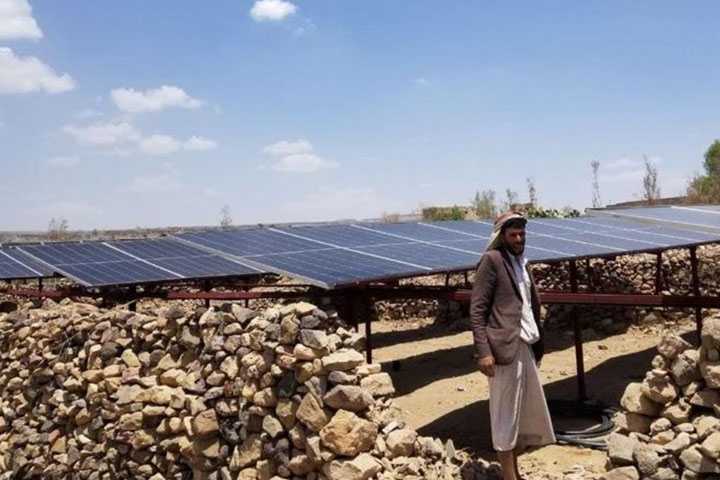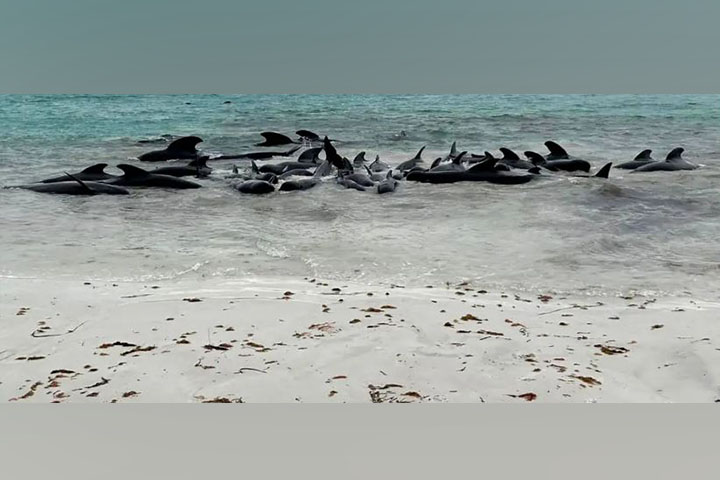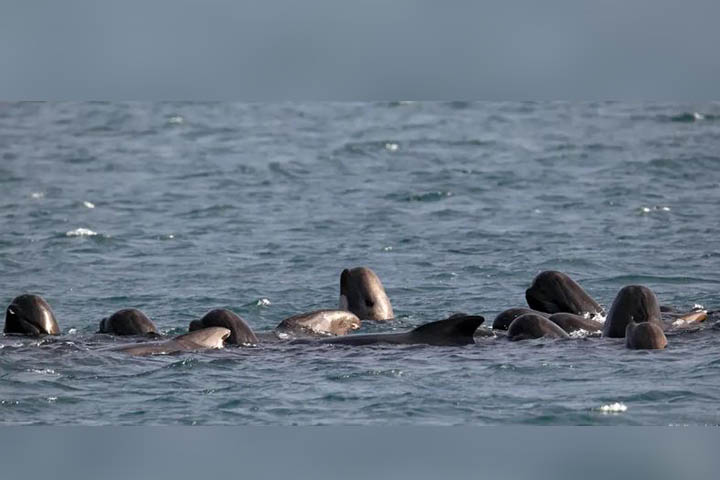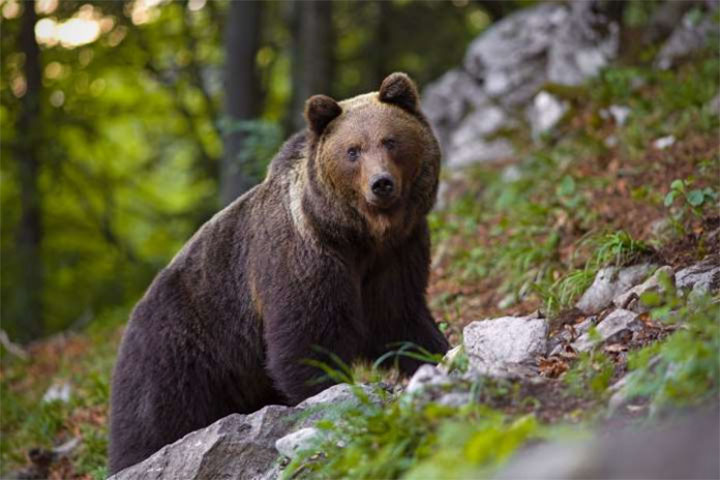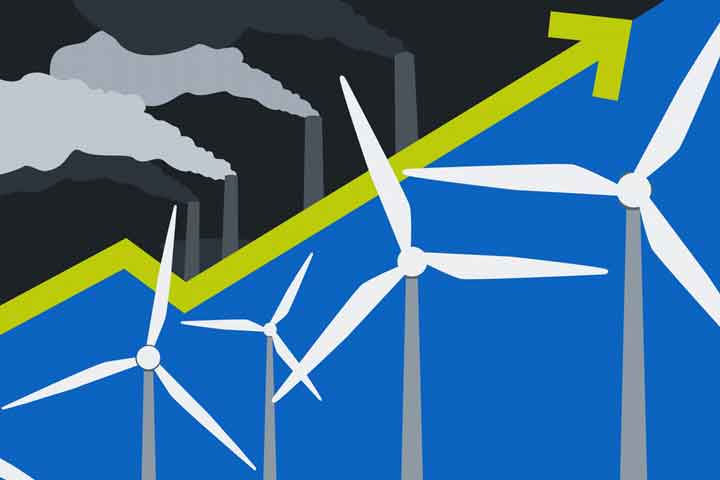Will the Middle East run out of groundwater soon?
It is the invisible ingredient responsible for this year's bumper wheat harvest in Iraq, a country generally considered one of the most endangered by climate change and drought in the world.
It has also helped increase the number of Tunisia's all-important date-palm oases, is keeping Yemen's agriculture going despite war and ensures that Libya's bustling coastal cities are supplied with water.
Groundwater — fresh water stored underneath the earth and accessed mostly by wells — has always played a significant role in arid Middle East countries. Because it is underground, it is not as impacted by drought and heat , and it's the main source of fresh water for at least 10 Arab nations, the United Nations Economic and Social Commission for Western Asia, or ESCWA, stated in a 2020 report.
But as climate change impacts what little rainfall these countries get and extremely hot summers dry up more rivers and lakes, groundwater is becoming even more important.
Unseen underground rivers
"Awareness of groundwater is rising," said Annabelle Houdret, a senior researcher at the German Institute of Development and Sustainability, or IDOS, who's been looking into groundwater management in Morocco specifically.
"In general, people have not thought about it as much as they should because they don't see it. If you see a river where levels falls dramatically, it immediately gets a reaction," she continued. "But [groundwater] is an abstract. By the time we become aware of what's happening with groundwater, it may well be too late."
Making it even more complicated is the variable nature of groundwater, Mohammed Mahmoud, director of the climate and water program at Washington-based think tank, the Middle East Institute, told DW.
There is growing pressure on groundwater in the region, Mahmoud says, but it's also a complicated resource. How to manage groundwater depends on what sort of ground or rocks it's stored in, how deep it's stored, how it flows and how it's connected to nearby surface water like rivers and lakes. It also depends on whether the groundwater comes from renewable sources.
For instance, some groundwater in the Middle East has collected underground over thousands of years. This is called "fossil groundwater" and it's hard to replenish. Like oil in the ground, it's a single-use resource, experts say.
"These groundwater resources are found at great depths and are hardly, or not at all, renewable," explained Ramon Brentführer, a project manager at the groundwater policy advisory of Germany's Federal Institute for Geosciences and Natural Resources. "But in recent decades, these aquifers have been increasingly tapped."
On the other hand, some groundwater sources do renew regularly because of, for example, rain, Brentführer says. However, even when groundwater resources are renewable, anybody using it needs to be careful to maintain a balance: Don't take out more water than is coming in.
Measuring groundwater is crucial but difficult
Organizations like ESCWA warn that this balance may not be maintained in the Middle East. But it's also very hard to know how bad the imbalance is, or how to manage it.
Part of the reason is that it's very hard to measure groundwater levels simply because of where it's located. Additionally, the degree to which any country in the region measures its water, whether above or below ground, varies widely.
For example, in Yemen, which has been in the throes of a civil war for almost a decade now, it is extremely difficult to measure supplies.
Other countries like Saudi Arabia appear to be well aware of groundwater levels. In 2018, Saudi Arabia halted its own expansionist agricultural program, started in the 1970s. It had relied on using groundwater to grow wheat. The end of the program indicates the Saudis realized they were depleting their own groundwater.
It is possible to measure groundwater from outer space, using satellites like NASA's Gravity Recovery and Climate Experiment, or GRACE. These measure the world's water movements — things like melting ice caps and rising ocean levels — by measuring Earth's gravity. Whenever a mass shifts, it changes Earth's gravity just a little. When there's less groundwater, there's also less mass, and satellites report this information.
"However, GRACE does not provide data for local water management," Brentführer said. "This is where remote sensing reaches its limits."
For that, one needs things like local observation wells, the water expert told DW. These have to be financed, built and regularly monitored by trained staff, which makes them a non-feasible option in some places.
And, Brentführer added, not having the information is just one aspect of this: "In Jordan, for example, the groundwater situation is well known but there is a lack of enforcement to regulate water abstraction for agriculture. And the rich Gulf countries — like Saudi Arabia — know their water resources quite well, but are not transparent with their data."
Many Middle Eastern countries already have regulations about water use, the IDOS' Houdret says.
"But enforcement can be problematic," she added.
Houdret tells of a local water authority employee in Morrocco who's sent out to check on illegal wells. He has one car, limited fuel and a huge amount of territory to cover, she explains, and he's regularly greeted by stone-throwing villagers who don't want him to inspect anything.
When will groundwater run out?
The question is, if nobody really knows how much groundwater there still is and at the same time its use is increasing, is there a possibility the Middle East could run out?
Recent information captured by GRACE satellites appears to show the Middle East's groundwater has been significantly depleted over the past decade. The UN's ESCWA reports that many local groundwater aquifers are already being used up at a faster rate than they can be replenished.
Despite such warnings though, the truth is that nobody really knows if, or when, the Middle East might run out of groundwater.
"Groundwater involves a very complicated system that interacts with other natural systems," said Youssef Brouziyne, regional representative for the Middle East and North Africa at the International Water Management Institute, a research organization headquartered in Sri Lanka.
Systems involved include nearby rivers or wetlands, associated ecosystems, rainfall and coastlines as well as pressures from salinity and pollution.

 Live Tv
Live Tv

